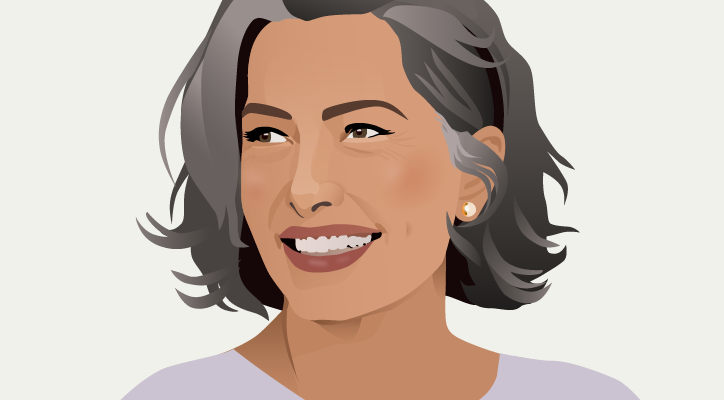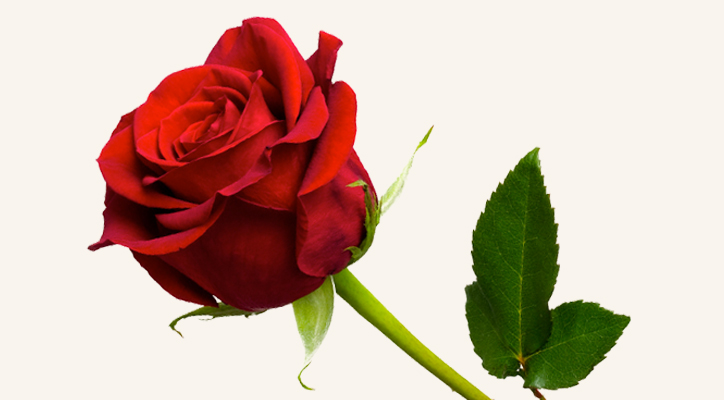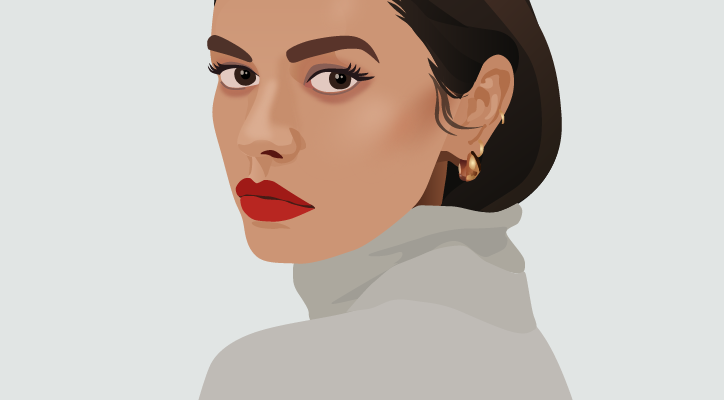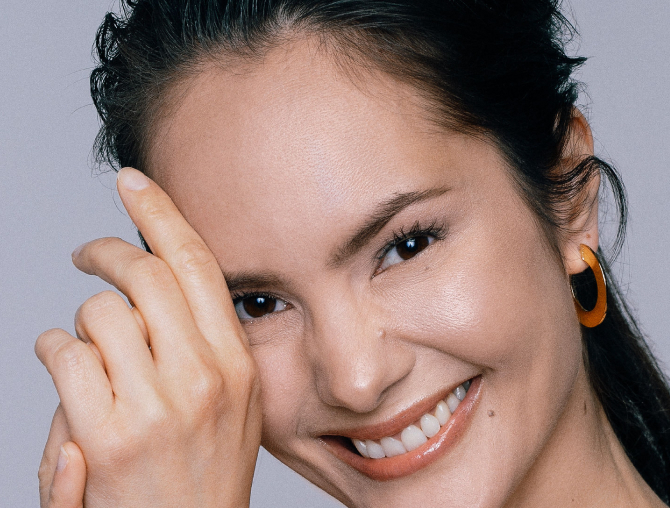In the last decade lip filler has exploded in the cosmetic industry, growing by almost 60%. With that growth, a variety of lip trends and techniques have emerged — their popularity gaining or losing ground depending on which celebrity or influencer’s look happens to be most in vogue in the moment.
We’re no stranger to cosmetic trends. We get it, it’s our industry. Dr. Lista, one of our co-founders and the medical director at The Plastic Surgery Clinic often jokes about the shifting fashion of fat: “when I started out as a plastic surgeon over 30 years ago we were taking fat out of the butt… now, we’re putting it back in.” Trends comes and go, and a good cosmetic practice will always put natural outcomes first. Natural shapes should be enhanced, not fundamentally altered.
But recently, we’ve been getting more and more questions from patients asking about and even for specific lip shapes and trends. We’ve seen and heard about them all: the lip flip, cherry lips, Russian lips, the key hole pout, the cupid’s bow technique and so on. But here’s the thing: aesthetic procedures only look great when we work with your existing features, proportions, and shape.
Just because something might be possible doesn’t mean it’s going to work for you. In fact, many aesthetic practitioners are now sounding the alarm over the proliferation of these trends: they worry these new approaches are contributing to a large scale distortion of what we consider “natural” beauty.
Before diving into the differences between the top lip trends we’re seeing these days, check out this illustration showing the anatomy of the lip. It’s important to know the lingo as we’ll reference these areas as we describe the various lip injection techniques.

What Are Russian Lips?
The Russian lip trend is probably the most asked about look in our practice and the most controversial among injectors. We’re not totally sure of its origins, and when exactly it went awry (and boy, did it go awry), but it’s certainly taken on a life of its own.
In a nutshell, the Russian lip technique involves a series of micro injections targeted primarily at the vermillion border (see Figure 1). The goal with the Russian lip technique is not to necessarily add overall volume to the lips, but to increase their vertical height, and to define the border of the lips.
The problem, however, is that we’re now seeing overly crisp and very unnatural looking vermillion borders. The lips might look ok in a before and after shot that doesn’t show the patient’s whole face, but when considered as part of their entire facial anatomy the result is less than desirable. With this technique, you also run the risk of the filler spreading outside of the vermillion border, which can lead to a heavy, unnatural looking philtrum (see Figure 1) that can visibly age a patient.

In this individual (not a patient of MD Beauty Clinic), significant volume has been added to the lips so that the patient’s philtrum is shortened. However, the vermillion border is far too crisp, giving the appearance of a “shelf”. This will undoubtedly look strange when looking at the patient’s face as a whole, and the risk of filler migration is high. The “shelf” appearance may also get worse over time.
Cherry Lips, the Lip Filler Trend from Korea
The cherry lip technique is a newer trend we’re seeing. It seems to come from a desire for a more natural looking outcome, but just like any of these trends, in the wrong patient it will look, well, wrong. Rather than disperse the filler throughout the entire lip area, the cherry lip approach targets the centre of both the top and bottom lips. Think of two cherries in the centre of your top lip, and two on the bottom.

This technique may look good in a patient whose anatomy already resembles the above illustration, and with careful consideration of the face as a whole. But it should never be attempted in a patient whose natural anatomy does not already mimic this shape.
The Cupid’s Bow Technique
The cupid’s bow technique is part Russian lip, part cherry lip. It focuses primarily on filling the two tubercles on either side of the top lip, and defining the cupid’s bow (see Figure 1 for a reminder of lip anatomy) with micro injections. The idea is to create a sharpened and heightened cupid’s bow, while leaving the centre tubercle relatively untouched.
Again — are we sounding like a broken record yet? — if this is what your natural anatomy resembles, then the cupid’s bow technique will work for you, but we’re never going to advocate for creating a lip shape you weren’t born with.

Rihanna is often cited in discussions of the cupid’s bow lip filler technique. We can’t say whether she has had filler but she does have a very defined cupid’s bow with less volume in the very centre of the upper lip.
The Keyhole Pout Lip Filler Technique
The keyhole pout trend was very big about 5 years ago. You may remember videos on Instagram of patients holding a string, or thin stick at the center of their lips while the injector filled the surrounding areas. The idea was to create an Angelina Jolie type lip with an obvious “keyhole” at the center.

Kylie Jenner is a good example of someone who tried to create this look. You may notice that Kylie appears quite nice in photos (if a bit extra), but when she is talking there is something uncanny about the way she looks. We chalk this up to way too much filler, and an attempt to create features that she simply wasn’t born with.
The Non Surgical Lip Lift
Ok, now this is a trend we can get behind. It’s not so much a trend as it is a return to normalcy. The Non-Surgical Lip Lift is an approach developed by British cosmetic doctor, Steven Harris. Dr. Goyal recently completed Dr. Harris’ course and both she and co-medical director Dr. Chbat have been applying this approach at MD Beauty Clinic.
With the NLL technique the idea is to treat the face as a whole. Facial reshaping and rejuvenation should be the priority before even addressing the lips. Augmenting the lips of a patient in her 60s without first addressing facial fat loss and symmetry will only make the patient look strange. Likewise, attempting to create a lip shape that a patient is not born with or is not in proportion to their natural features will give an undesirable appearance.
The goal is always overall beautification, and to work with the natural anatomy of the lip. Subtle volume can be added to the patient’s tubercles and vertical height can be increased by injecting just under the vermillion border: this helps to add volume and shorten the philtrum creating a lovely youthful look without the dreaded “shelf.”
The Problem with Lip Trends
Dr. Goyal maintains that “we can improve the volume, symmetry, and definition of the lips, but we really should not try to change their shape.” That’s why these lip trends are so problematic, as they’re encouraging both patients and providers to seek unnatural outcomes.
When you come for a consultation at MD Beauty Clinic we will always devise a comprehensive treatment plan to achieve facial optimization in a safe and natural way.

This lovely patient wanted to address her lip lines and thin lips. Dr. Goyal achieved this by using just over 1/2 syringe of filler. It’s a great example of how lip filler doesn’t have to look like “lip filler.” Natural enhancement and augmentation is possible with the right technique and conservative use of fillers.

Our long time patient came for a top up of her cheek and lip filler, which she first had last summer. Dr. Goyal used 1.6 mL of filler to create this look: 0.5 mL in either cheek and 0.6 mL (a mini lip plump) in her lips. All that was needed was a natural little refresh to restore lost volume. Over time you will notice that you will need less filler to maintain your look. A good injector will ensure you don’t accidentally get “too much” and start to look overdone.
Before undergoing any aesthetic treatment it’s important that you understand and trust your provider’s approach. If you get the sense they are sacrificing safety and a natural outcome in favour of what’s “trendy” it might be best to move on.







